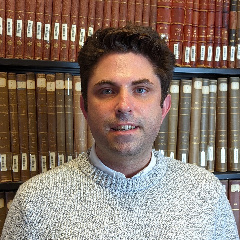The main change introduced this past year was to have a uniform assessment structure across all introductory math courses. Every course now assigns three problem sets (p-sets) per week, mid-terms, and a final exam. While at face value this might seem to revert to a more traditional evaluative model, the key point, Kelly notes, is to use the assessments as tools for instilling effective learning strategies for students.
This shift in approach involves reflection questions after every test and a practice exam that encourages self-regulation. "It's not just ‘take this practice exam,’” says Kelly, “It's ‘take it, then take a step back and identify, where do I need to put some concentrated work?’" This forces students to ask themselves, “do I really know this?” One student noted that they hadn’t realized they were taking the wrong approach to prepare for an exam until these questions were asked. The more general result of this approach has been promising as well. Early results in higher level courses were the same across students, regardless of whether they had prior knowledge or were graduating up from the prior Harvard math courses—a key indicator of success.
The benefits
Students are equally likely to be successful regardless of their starting point. “We found [after restructuring] that there was no statistical difference on the first exam taken by students in Math MB and 1b,” Kelly notes—a drastic difference from just a year prior. The p-sets connect concepts from class-to-class, providing opportunities for pre-thought to prime a classroom discussion or reinforcement of learning from a previous session. Mid-terms synthesize learnings over a 4- to 5-week period and the final exam is a look back on the whole semester.
“There are lots of different approaches to education, many of them valuable. But if you don't create an arc for students to progress through, then I think it becomes really hard for them.”
The challenges
Assessments can be intimidating for students when they perceive the outcomes as “sink or swim.” Kelly tries to remind his students that the assessments do not define their ability but are meant to show current ability. After each exam, the teaching team hosts a “wrapper” in which students look though their exam feedback and reflect on specific questions like, “What does this demonstrate about what I know? What do I still need to learn? What strategies did I use to prepare me for this exam, and how might those change for the next assessment?”
Takeaways and best practices
-
Curricular-level orchestration.
Collaborate with colleagues to ensure that the content and skills taught in one course complement and build upon those taught in others to create a cohesive and comprehensive learning experience.
-
Pre- and post-test reflection is key.
Provide space for students to examine their learning to better understand underlying concepts and principles rather than memorizing formulas or reciting lecture notes.
-
Suggest additional supports.
Offer a variety of opportunities for students to productively engage with course content like office hours, student-led workshops, and interactive forums.
Bottom line
Assessments can serve as a measure of what students currently know, but can also be used as a tool for identifying areas where they can improve. When implemented intentionally and in a way that connects to learning objectives, reflection can empower students to understand their learning process, identify areas of improvement, and develop effective strategies for future learning. To boot, the process can lead to fostering deeper comprehension and long-term mastery of concepts. Further bolstering the effects of this approach, aligning assessment structures across the curriculum ensures that content and skills taught in one course complement and build upon those taught in others, creating a cohesive and comprehensive learning experience.
 The debate over assessments—their frequency, structure, and value—has become more vibrant in recent years, first with the onset of COVID-19 and now with the advent of Generative AI. As instructors experiment with different approaches, the Math Department has increased its emphasis on assessments, yielding some early successes.
The debate over assessments—their frequency, structure, and value—has become more vibrant in recent years, first with the onset of COVID-19 and now with the advent of Generative AI. As instructors experiment with different approaches, the Math Department has increased its emphasis on assessments, yielding some early successes.
